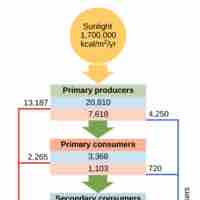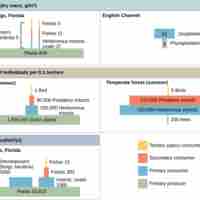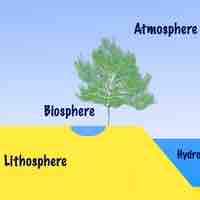Chapter 46
Ecosystems
By Boundless
Ecosystems are controlled both by external and internal factors; they can be both resistant or resilient to ecosystem disturbances.
A food web describes the flow of energy and nutrients through an ecosystem, while a food chain is a linear path through a food web.
Many different models are used to study ecosystem dynamics, including holistic, experimental, conceptual, analytical, and simulation models.

Conceptual models describe ecosystem structure, while analytical and simulation models use algorithms to predict ecosystem dynamics.
Autotrophs (producers) synthesize their own energy, creating organic materials that are utilized as fuel by heterotrophs (consumers).

Productivity, measured by gross and net primary productivity, is defined as the amount of energy that is incorporated into a biomass.
Energy is lost as it is transferred between trophic levels; the efficiency of this energy transfer is measured by NPE and TLTE.

Ecological pyramids, which can be inverted or upright, depict biomass, energy, and the number of organisms in each trophic level.
When toxic substances are introduced into the environment, organisms at the highest trophic levels suffer the most damage.

The elemental components of organic matter are cycled through the biosphere in an interconnected process called the biogeochemical cycle.
Water has a large effect on climate, ecosystems, and living organisms and is continuously cycled through the environment.
Carbon enters the atmosphere in the form of carbon dioxide via the carbon cycle and returns to organic carbon via photosynthesis.

Nitrogen is cycled through the earth via the multi-step process of nitrogen fixation, which is carried out by bacteria.
Phosphorus is an essential element of living things, but, in excess, it can cause damage to ecosystems.
Sulfur is deposited on land as precipitation, fallout, and rock weathering, and reintroduced when organisms decompose.